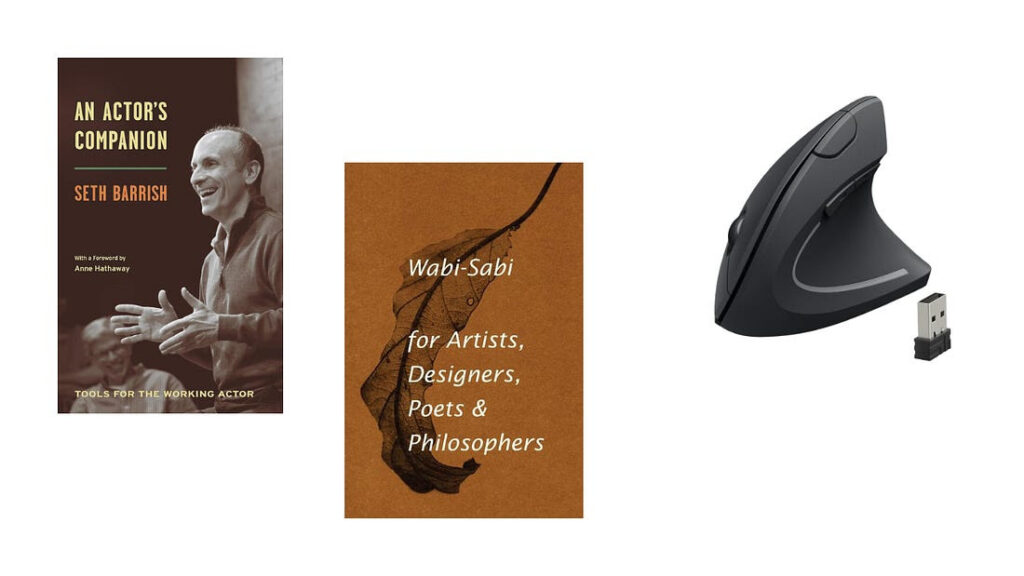Radio Journalism Production Tools
A tool kit for documentary radio by Jay Allison
A decade and half ago, I published in Whole Earth Review a wonderfully succinct guide to conducting a radio interview/story, written by radio producer Jay Allison. It’s still great advice (available on Transom.org), so I asked Jay what tools he is recommending for radioheads these days and he quickly sent back the following pithy and incredibly useful reviews.
— KK
***********************
So you want to make a story for radio?
The first tool I’d recommend is the public radio website Transom.org, which covers a spectrum of Tools, Ideas and Practices. You’ll find recommendations for new gear there, but more than that, you find new voices and new ways of telling. It’s a performance space and master class with the likes of Studs Terkel, Sarah Vowell, Norman Corwin, Scott Carrier and lots of others. I’m quite proud of it (it comes from a non-profit group I founded, Atlantic Public Media) and it’s having a real impact in public broadcasting. Check it out: Transom.org
*
Sharp mini-disc,$150-250, previously available from Amazon
As for gear, many people are using the small mini-disc recorders in the field these days. The portable mini-discs are teeny and cheap, but honestly I feel that’s their weakness. They break. Their tiny mic inputs get stressed. Humidity hurts them. If you want to hear something heretical in the digital age, I often still use an old analog cassette recorder, the venerable Sony TC-D5M. It runs on D-Cells and is not subject to digital gremlins. It sounds quite sweet, if somewhat noisy compared to the silent sheen of digital, and I can almost always rely on it. I use portable DAT recorders too, but the best, the HHB, uses rechargeable batteries which, like all rechargeables, are inherently evil and programmed by the devil to fade at the moment they are needed most. I personally do not use Minidisc recorders, but they sound good for the money, which is why lots of people love them and I recommend them for beginners. The model numbers change, but the Sony and Sharp units are the most popular, particularly the Sharp for its more flexible recording volume controls and AA battery powering. For specific models, check the latest recommendations at Minidisc.org.
*
Beyer M58 microphone
$260
Broadcast Supply Worldwide
800-426-8434
Previously available from Amazon
For an all-purpose interview mic, I’d pick the Beyer M-58. It’s a dynamic omni with a long handle for getting in close to the speaker’s mouth, which is required for radio. It represents a good balance between sweet sound and indestructibility. You need the M-58’s windscreen, a set of headphones (Walkman-style will do), and the proper XLR-miniplug cable to connect the mic with the mini-disc recorder. The best cable has a right-angle plug which doesn’t stress the delicate input. Sonic Studios makes nice custom cables. In fact, their website sells a variety of portable rigs, configured and ready to go, plus lots of good advice for recordists.
*
ProTools
Free download at
Digidesign
Finally, I’d say the most remarkable new tool is Digidesign’s ProTools. ProTools is editing and mixing software. It replaces many bulky and expensive items of yesteryear, like the reel-to-reel tape recorders we used to edit on with razor blades (a lost and lovely skill), the multi-track machines and mixers which blended our sounds, the various outboard signal processing devices which improved the audio. Now it all comes in a little box for a few hundred bucks. Anyone raised around computers will get the hang of it quickly. It’s powerful stuff. Of course, you still have to have talent, smarts, and a great ear. Digital technology hasn’t changed that.
Digidesign has a free version, ProTools Free, which is just enough to get you hooked and make you want to move on to the hard stuff… which is NOT free, but still just a fraction of what it would have been only a few years ago for this kind of power in a digital audio workstation. It works best on the Mac.
*
Mbox
$130
Available from Amazon
UPDATE: $450 for Mbox2 available from Amazon
Getting the sound in and out of a computer with ProTools Free, however, is tricky. There are lots of kludges and work-arounds that will get you started for little money (check the Transom.org discussion boards), but if you’re at all serious, you’ll be happier spending the few hundred bucks for the commercial version than wasting your time on trickery. The commercial ProTools package includes a hardware interface (it’s like an external audio card) which allows you make the connections easily. Their MBox is the cheapest of these – at $500 list, with the fully enabled software included. One thing: the interface must be connected to your computer in order for the commercial version of ProTools to work.
*
So, the basic setup is an inexpensive portable mini-disk recorder, a Beyer M58 mic, the Digidesign MBox as the interface between the gear, with ProTools software installed on any recent Mac, even an iBook. An external firewire many-gigabyte drive is recommended but not necessary. This package gives you all the digital/analog ins and outs, plus astonishing editing/mixing/processing tools for creating fully professional stories or music. Burn a CD or rip an MP3 when you’re done, and share with the multitudes. At Transom.org, you’ll find youngsters and oldsters who are doing exactly this and are getting their stories on public radio. It’s a step in the direction of citizen access to mainstream media, when most steps are headed in the opposite direction.
Current reviews of mini-discs
Minidisc







